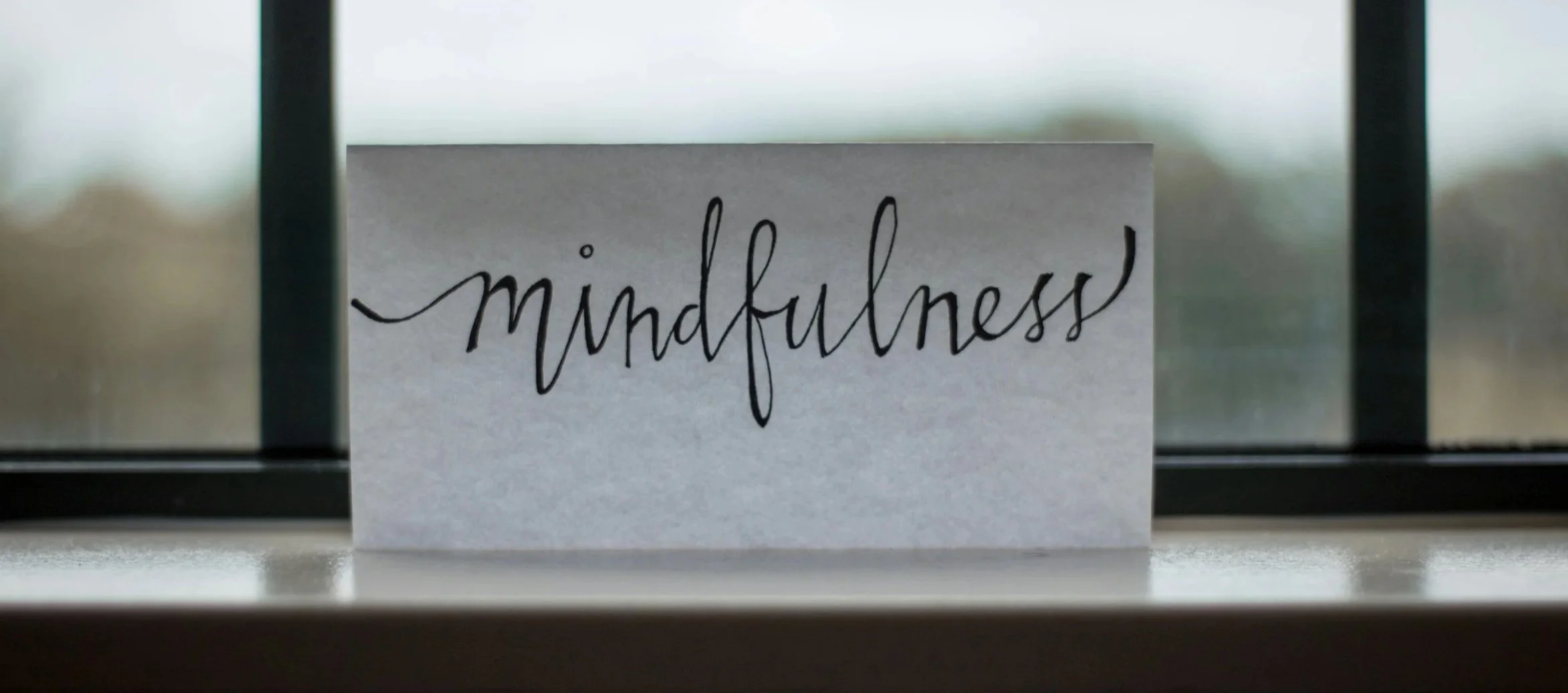Taking Back Our Power Through Mindfulness
Mindfulness in Daily Life
The term mindfulness is used in many different contexts and practices, and often interchangeable with meditation. Ultimately, at its core, it’s quite simple. It means being with what is. Being in the present. Noticing what arises.
It’s a practice of not getting lost in past wrongs or future worries. As when we’re going through a difficult time, often the mind goes on a journey away from what is present - it races ahead, considers many what if’s and gathers evidence of what is wrong. Sometimes it overlooks what is often also in front of us: light amongst the dark. Essentially, we can become more immersed in our struggles than we need to be. This is where mindfulness can be a gentle guide to help us through.
Mindfulness in Practice
There are many ways to invite mindfulness into our day:
Meditation
A gratitude list
Tuning into the senses
Breath awareness
Body scans
Journalling
The above are beautiful practices for mindful living. But something I want to encourage is to go outside of the practices above, and be deliberately intentional with your moment to moment awareness.
Interrupting the Minds Habits
Let’s say something uncomfortable has happened, or you’re in a bad mood that’s lingering for days. The mind might be in a reactive state, creating a rigid story about what it all means, and what it doesn’t like about what’s happening. But with a reminder to see the full picture, there may be some beauty found. It’s an opportunity to see the shining light amongst the dark. We don’t know how it will all unfold, but when we tap into the present, we have a greater chance at letting our nervous system know it’s safe, because we’re recognising more of what is at play - not just our initial focus.
When we practice mindfulness like this, we’re more likely to:
1. Create space between experience and response - Instead of being on the ride of our emotions or thoughts (and potentially creating conflicts) we start to notice them. The more we practice this, the more space we can allow between what is happening and the story we are creating about it. We get to be more intentional in how we interpret and respond as events unfold.
2. Shift our focus to what’s going well - When we are mindfully observing events as they take place throughout our day, and guiding ourselves to look for what feels good or to notice even the smallest blessings in the moment; we might notice things we wouldn’t have otherwise. We might have more positive emotions and as a result, the bad mood has vanished.
A way to set yourself up for success is to incorporate a mindfulness morning routine:
From the moment we wake up, our minds are impressionable (Notice the difference in your focus on days when you spend time on your phone first thing versus when you don’t).Upon waking is a great opportunity for us to shape our mind for the day.
You might even recognise themes of negativity or complaints, yet have a chance to redirect them.
One way to do this morning practice is to ask:
What’s present for me right now? (acknowledge any negativity, be with it, and then redirect)
Is there anything I can feel good about?
As I look around, what am I grateful for? (object, person, place, comforts, circumstances etc.)
The more we ask ourselves these questions, the more we’re training our brain to look for the good. The next step - is about bringing our focus back to this throughout the day and repeating those questions. This as a daily practice can shift our common thoughts quite quickly, and then you might start to notice that being in gratitude becomes more of a default.
This is not about ignoring or suppressing the bad, but rather, opening ourselves up more to what else is possibly there.
How this Works in the Brain
We have a part in our brain called the reticular activating system, it’s like a filter. It decides what information is relevant to us and filters it into our awareness, and we can train it. The more we signal to our brain what is important to us, the more the brain will filter in experiences aligning with that, and filter out what is less relevant. If this is happening alongside the positive thought pathways deepening, we have a different lens on throughout our day to interpret what we are seeing and thinking, to benefit our mental well-being.
When we practice mindfulness, especially through the lens of gratitude, we are doing more than calming our mind, we’re taking control of our thought patterns, to foster more resilience and happiness.
This is how we take our power back, not by controlling what happens around us but by actively choosing how we meet it.
If you're feeling called to deepen your mindfulness practice and shift the way you relate to stress, you’re welcome to explore what I offer at Soul Bloom Wellness: www.soulbloomwellness.com.au

